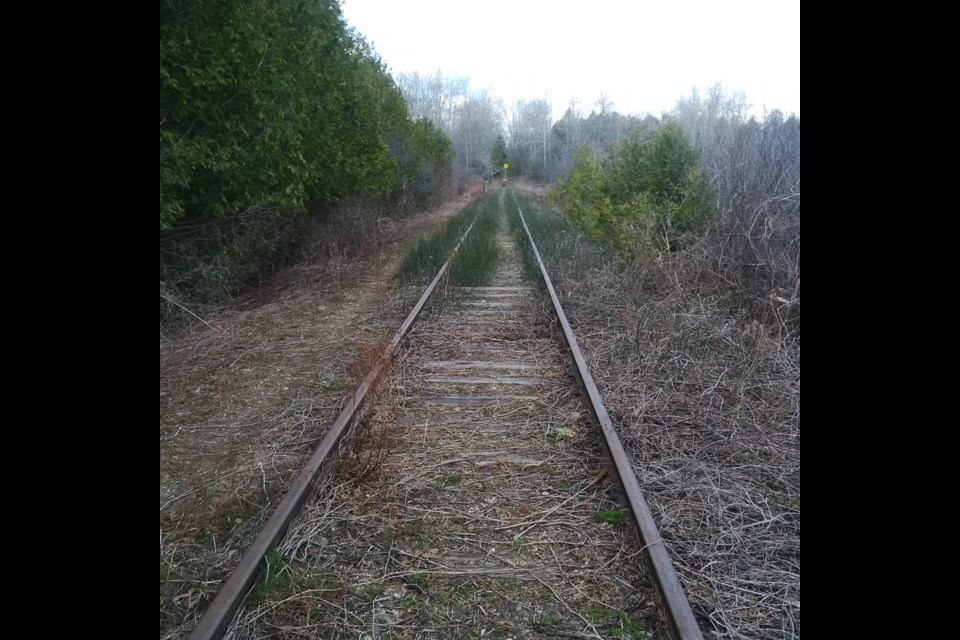The completion of the final segment of the Guelph to Goderich rail trail that connects the Kissing Bridge trailhead to Guelph Central Station has faced a number of stumbling blocks to date, but a local group is rallying to move the project full steam ahead.
Recent refurbishments to the G2G Rail Trail have increased its usage and popularity, and resolving this missing link could place Guelph trails on the map for eager cyclists and hikers from near and far.
The Rail Trail Committee (RTC) is made up of members from the Guelph Coalition for Active Transportation and the Guelph Hiking Trail Club, among others. Formed after an initial consultation with the G2G Rail Trail Committee earlier this year, the group is focussed on raising awareness and working with the city to complete the fifth and final segment, unofficially named the Royal City Trailway, that will run alongside the active rail line and the Trans Canada Trail (TCT) directly into downtown Guelph.
“The first step is to get people excited about it and see the value in it,” said Lorenz Calcagno, the head of the RTC. The committee has reviewed numerous economic impact studies of trails across Canada and the United States and is putting together its own assessment of the benefits of completing the trailway in Guelph.
But the group is only just getting over its first significant hurdle, as it was formed at the outset of the pandemic in March.
“We never got that running start and the rug got pulled out from under us. It hasn’t gotten to the point where we would like it to be by now,” Calcagno said.
In the last few weeks of summer, however, the RTC has re-ignited conversations with city officials to finalize a plan for the missing link. The issue has a long and complicated history involving property ownership, environmental constraints and technical and financial challenges, but the RTC hopes to make a case to the city and other stakeholders to get the project moving forward.
As it stands, the official detour route of the G2G, as mapped on their website, begins at Guelph Central Station and joins up with the TCT at Woolwich and Macdonell Street. Users can follow it to the Guelph Junction Railway path, cross Speedvale Ave., and continue through Riverside Park. The detour then follows sporadic waypoints through Woodlawn Memorial Park, and up Woodlawn Road to Silvercreek Pkwy, which leads to the Kissing Bridge trailhead.
This winding, twisting detour can leave many users scratching their heads. That’s why the RTC is advocating for a simpler, more direct route to complete the rail trail.
“The best situation is a straight line following the current active rail line [the Guelph Junction Railway]. That would be our ultimate goal,” said Calcagno.
In the meantime, some users are instead following the gravel hydro corridor path north of Edinburgh Road all the way to the Marden Tract, a hiking-only trail that emerges at the Kissing Bridge trailhead.
Calcagno and some other members of the committee see the formalization of this route as a suitable and lower-cost alternative, given that it follows pre-existing trails. But it would involve official permission from Hydro One to use the corridor as well as negotiations with the Grand River Conservation Authority, which owns the land on the Marden Tract, to repurpose the trail to allow bikes.
Any potential route would also require partnerships with the County of Wellington, Guelph Eramosa Township, Guelph Junction Railway, Hydro One, Infrastructure Ontario and the city.
Needless to say, it’s a complicated issue. But Calcagno is optimistic that the project would pay for itself in the long term with economic benefits from tourism.
“There aren’t a lot of rail trails around that offer this sort of out and back journey that is
a complete perfect package,” he said. “And when the light bulb went on for me, it was a no-brainer. I think our stumbling block is to try and get that light bulb to come on for other people.”
As part of the RTC’s background research, Calcagno cites numerous trails in the United States that generate millions of dollars of tax revenue, boost profits for local businesses and create thousands of jobs. He envisions a similar success story with the TCT once the missing link to Guelph is completed, subsequently connecting the city to other municipalities along the G2G. But he admits the process for approval, budgeting and construction is slow, and has been made even slower during the COVID era.
The city, for its part, is on board with the project and is developing a long-term financial and resource strategy for the Guelph Trails Master Plan and Parks and Recreation Master Plan, set for completion in 2021. They plan on meeting with the RTC and other stakeholders later this year to discuss options and outline next steps. The community will also be engaged before an official decision is made by Council, and updates can be found on the city’s website.
City park planner Tiffany Hanna says the project is a priority, but the timeline for completion, especially in light of the pandemic, is unclear. In an email to Guelph Today, Hanna wrote: “We recognize the community interest in the project as well as the potential economic benefits to the City as a whole. [It] should be rooted in complete and informed strategy that sets the entire system up for success.”
Funding for the missing link will be sourced from the city’s budget, but Hanna says they will likely need additional funding from other agencies to complete construction. Calcagno hopes that support and donations for the G2G and the TCT will keep the momentum going.
“It would be completely awesome to have this section done in the next five years,” said
Calcagno. “But (the timeline) depends on how well we do our job convincing council that this is something to do and how quickly money can be found to do it.”



